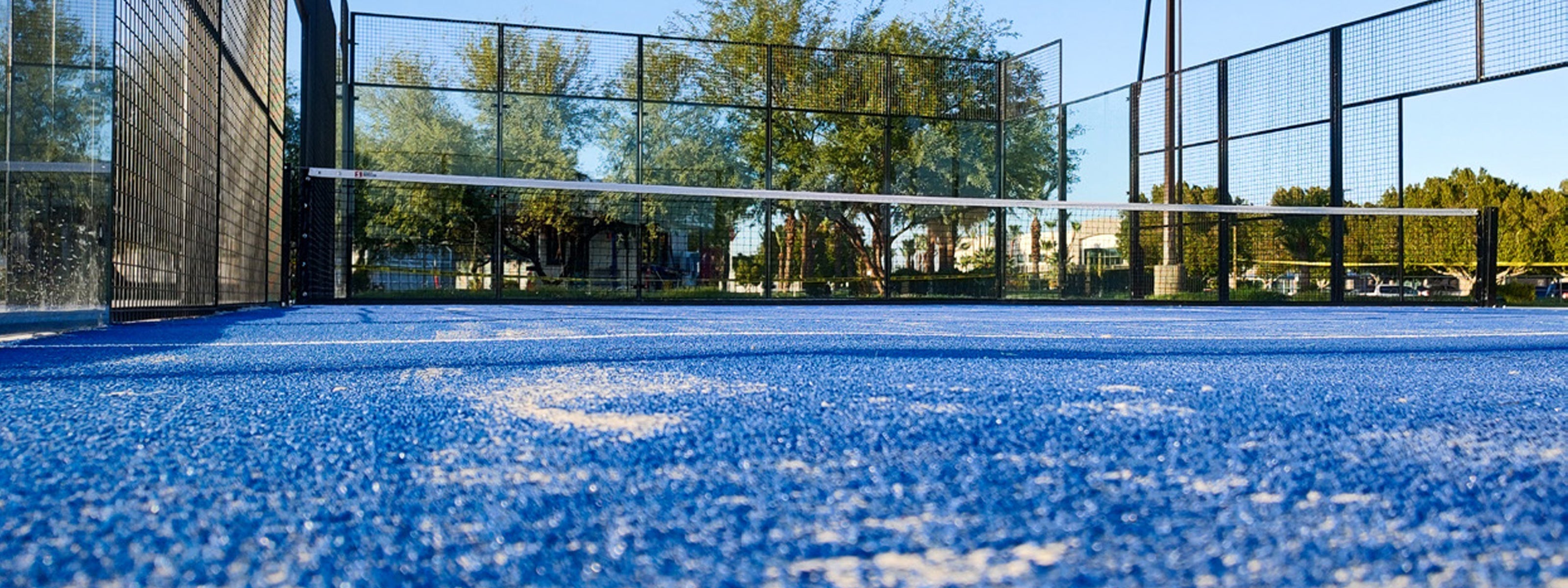
The more things stay the same…
In many ways, the sport of tennis hasn’t changed much since its earliest days in the late 1800’s and early 1900’s. But while the essence of tennis has stayed the same, many parts of the game have been in a constant state of innovation.
Wooden racquets gave way to metal and composite materials. Tennis balls, once made from cloth strips sewn together and stuffed with feathers, became vulcanized rubber with a felt covering. Tennis courts themselves were transformed and gained popularity following the invention of the lawn mower in 1830, allowing ‘lawn tennis’ and many other field sports to flourish.
Har-Tru, founded in 1932, was built on innovation—specifically, the creation of a new kind of clay surface. In the nearly 90 years since then, we’ve worked hard to continue to innovate and bring technology and other improvements to every aspect of the court.
Digital Water, Robots, and Hybrids
Some of those improvements are easy to see, like the Tennibot robotic tennis ball collector.

Some can’t be seen by players at all, like our new digital sub-irrigation system, the HyQ Court, which operates beneath the court.
And some are woven into the court itself, like our re-imagined hardcourt acrylic surface, Har-Tru Sports Coatings.
Throughout the years, we’ve leveraged the most advanced equipment and thinking available to manufacture better tennis court surfaces, equipment, and accessories.
But one center of innovation that very few people get to see is our manufacturing plant in the Virginia countryside.
Behind the Scenes
Our signature clay court surface, HAR-TRU green clay, is made from an extremely hard and angular Pre-Cambrian metabasalt found and mined in the Blue Ridge Mountains of Virginia. The stone is crushed, screened, and mixed in the precise proportions necessary to produce a stable playing surface.
Recently, we realized that the palletizer which processes this surface had outlived its extended life cycle. We experienced high maintenance costs, and excessive unplanned downtime forced us to keep large volumes of spare parts on hand to accommodate the repairs.
The old unit would move a pallet up and down for each layer put on the pallet, which would occasionally cause bags to slide and/or fall off the pallet while the palletizer was running. It also had multiple safety switches that could shut the palletizer down—and we didn’t always know which switch had faulted, which resulted in additional downtime or a service call.
Cold temperatures also had an impact on the palletizer, and, frankly, the unit was loud. To top it off, the system also effected the machine that bags HAR-TRU. When the palletizer went down, it shut down the bagger and caused issues getting the bagging line back up and running consistently.
Enter the Fuji Ace Robot palletizer
To keep ahead of the times, we invested in a robot designed and programmed to fit our specific products to our unique pallets. The Fuji Ace is one of the most technologically advanced robotic palletizers on the market today, and can be configured for high speed or heavy weight applications.
With a smaller space requirement, lower power consumption, and lower maintenance requirements, the new palletizer fits into our manufacturing plant perfectly. We’ve ditched laptops for controlling and programming, and now use an operator-friendly touch screen control. It took our team less than four hours to train on the system and get up and running.
With up to 1600 cycles per hour, product changes in as few as 15 seconds, a program that stores up to 120 stacking patterns, and a 200 kg weight capacity, our new robot companion is pulling its weight—and then some.
What’s next?
For the people at Har-Tru, the question is always “How can we make this better? Where can we improve? What’s the next innovation for tennis courts?”.
Our new robotic palletizer may not seem sexy, but it allows us to consistently produce, package, and ship the clay court surfaces you know and love.
Our digital underground irrigation system isn’t on many players’ minds, but it gives maintenance professionals a reliable and efficient way to keep courts watered just the right amount.
Developing advanced formulas for latex emulsion and organic pigments sounds like a job for a chemist (at Har-Tru, it is). When players step onto our Sports Coatings hard court surface, they may not know the science, but they can feel the result.
We don’t know how much things will change in the years to come, but we do know that we’ll strive to be at the forefront of the industry providing the latest technology for your courts and our sport.
###



